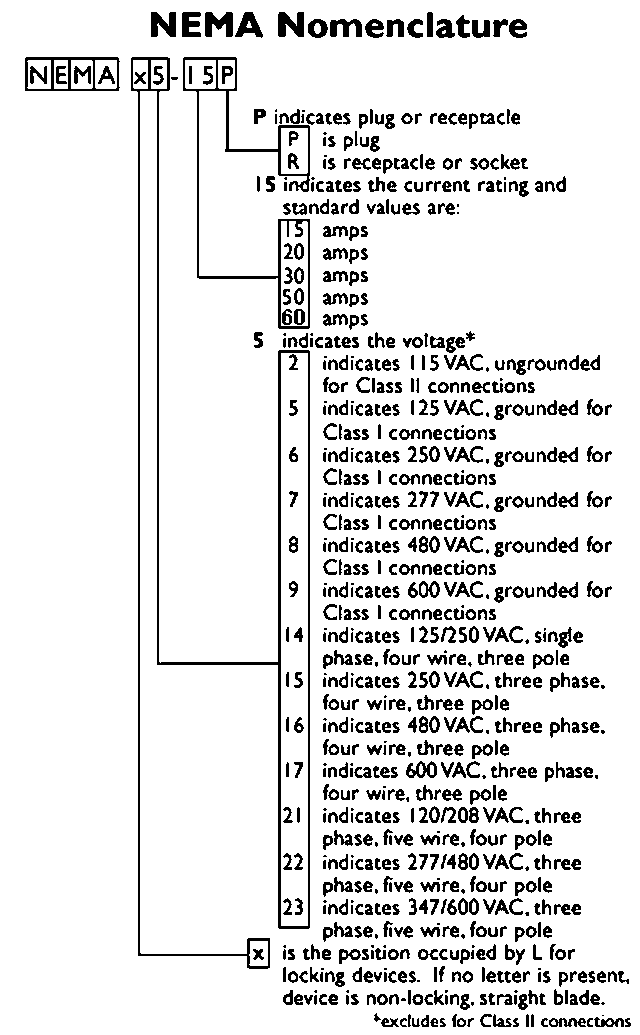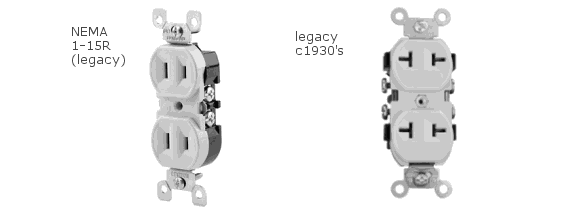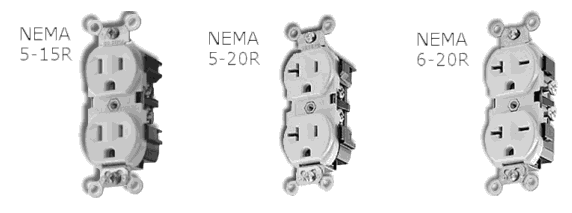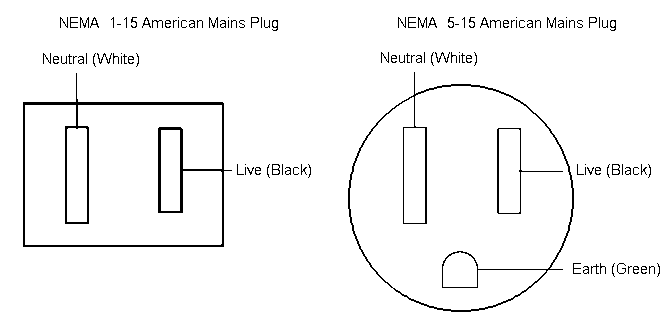Electrical Outlet Types of North America
Most important in the classification of outlets is voltage and the amperage they are suited for. By these features there are four main types of outlets:
- 120 V, 15 Amp, NEMA 1-15
- 120 V, 20 Amp, NEMA 1-20
- 220-240 V, 15 Amp, NEMA 2-15
- 220-240 V, 20 Amp, NEMA 2-20
In the United States the most widely used type of outlets is 120 V, 15 Amp, although some electric devices require outlets for higher voltage and/or higher amperage. These requirements are usually linked with the power consumption of electrical devices. Since lights use little power, they can safely be on an 120V 15A outlet, while power-consuming devices such as an electrical heater may require outlets with higher amperage or/and voltage to work safely.
The plug connectors are classified according to the NEMA naming convention. NEMA is an acronym for the National Electrical Manufacturers Association.
Contents
NEMA Nomenclature
The NEMA classification breakdown:
- Straight Blade or Locking
- Straight Blade (non-locking connector)
- NEMA 1
- NEMA 2
- NEMA 5
- NEMA 6
- NEMA 10
- NEMA 14
- NEMA TT-30
- Locking (twist lock connector)
- NEMA L5
- NEMA L6
- NEMA L7
- NEMA L21
- Straight Blade (non-locking connector)
NEMA Straight Blade
residential
File:CommonNEMAstraightbladeoutlets.png
residential receptacles
- NEMA 1-15R is commonly referred to as just NEMA-1 by electricians.
- NEMA 5-15R is commonly referred to as just NEMA-5 by electricians.
Grounded and Legacy Ungrounded
 Homes built prior to the early 1960’s were most commonly wired with a two-wire system, absent of the modern third wire being an equipment ground wire. The first requirement for grounded receptacles in residential construction dates back to 1951 when the NEC (National Electrical Code) required laundry areas to have grounded receptacles.
Homes built prior to the early 1960’s were most commonly wired with a two-wire system, absent of the modern third wire being an equipment ground wire. The first requirement for grounded receptacles in residential construction dates back to 1951 when the NEC (National Electrical Code) required laundry areas to have grounded receptacles.
- Electrical devices that can be used with non grounded receptacles are: lamps, radios, power adapters, toasters, vacuum cleaners and any item that the cord does not have the round third prong.
- Electrical devices that require a grounded receptacle (equipment ground) are: high-end appliances, computers, TV’s, stereo equipment, power tools, surge protector strips and any other electrical device with the cord having the third prong.
When three prong receptacles with open grounds are identified and a two-wire system is present in a home, the NEC currently allows the following methods to be used to resolve the problem:
- Install an equipment ground. (recommended for high end equipment, see previous comments)
- Provide GFCI protection for the receptacle (either at the receptacle or upstream of the receptacle) the receptacles are to be marked “no equipment ground”. This method does not provide an equipment ground.
- Replace the existing three-hole receptacle with a two-hole non-grounded receptacle.
Polarized Plugs
Polarized plugs have two different sized slots, the neutral is the larger slot, this allows for a device to be plugged in, in only one manner insuring correct polarity. Reversed polarity is when the common and hot wire is reversed on the receptacle; when this occurs the large blade receptacle is now hot rather than neutral.
As an example a lamp is plugged in with the polarity reversed, the exterior metal light bulb socket is “hot” at all times. In this instance when changing the bulb or touching the exterior of the socket the individual can be shocked. Reverse polarity is a safety issue.
GFCI Outlets
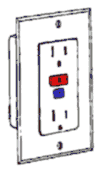 Ground Fault Circuit Interrupters (GFCI’s) are intended to protect the individuals using an electrical device particularly in a wet area. They are the receptacles with a black and red button, test and reset. It works by being tripped when sensing current leak/imbalance in turn shutting of the power to the electrical device.
Ground Fault Circuit Interrupters (GFCI’s) are intended to protect the individuals using an electrical device particularly in a wet area. They are the receptacles with a black and red button, test and reset. It works by being tripped when sensing current leak/imbalance in turn shutting of the power to the electrical device.
